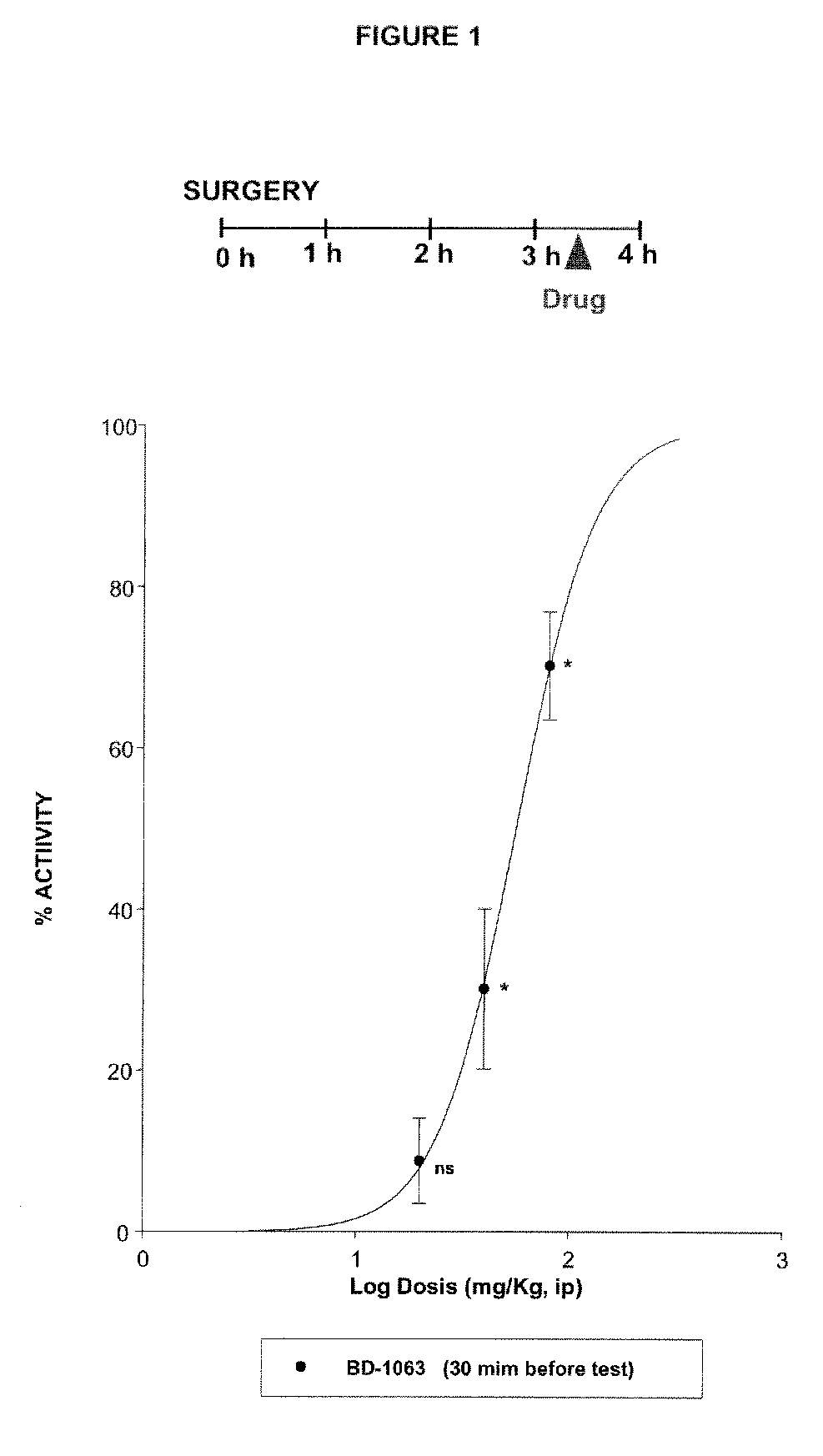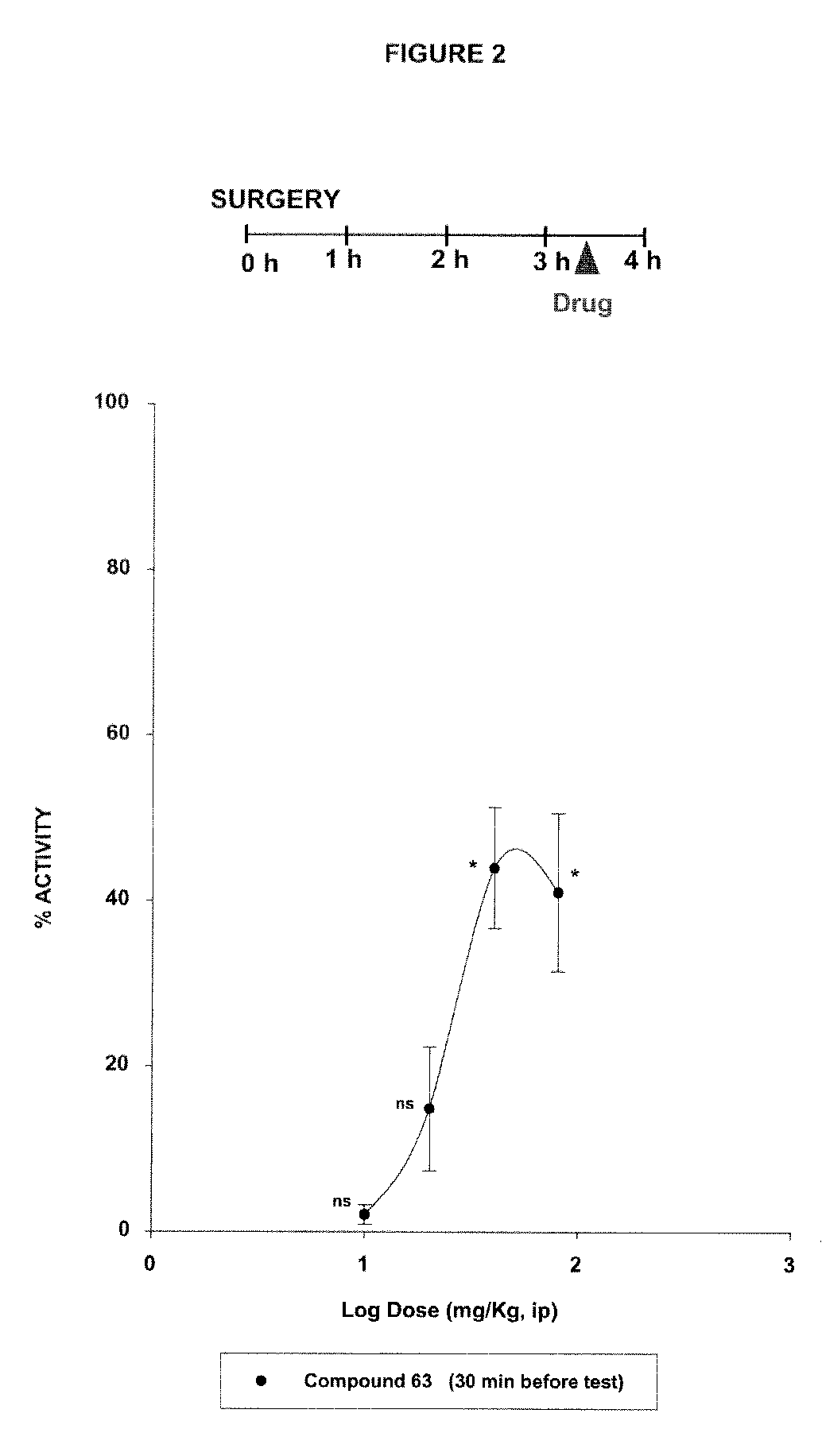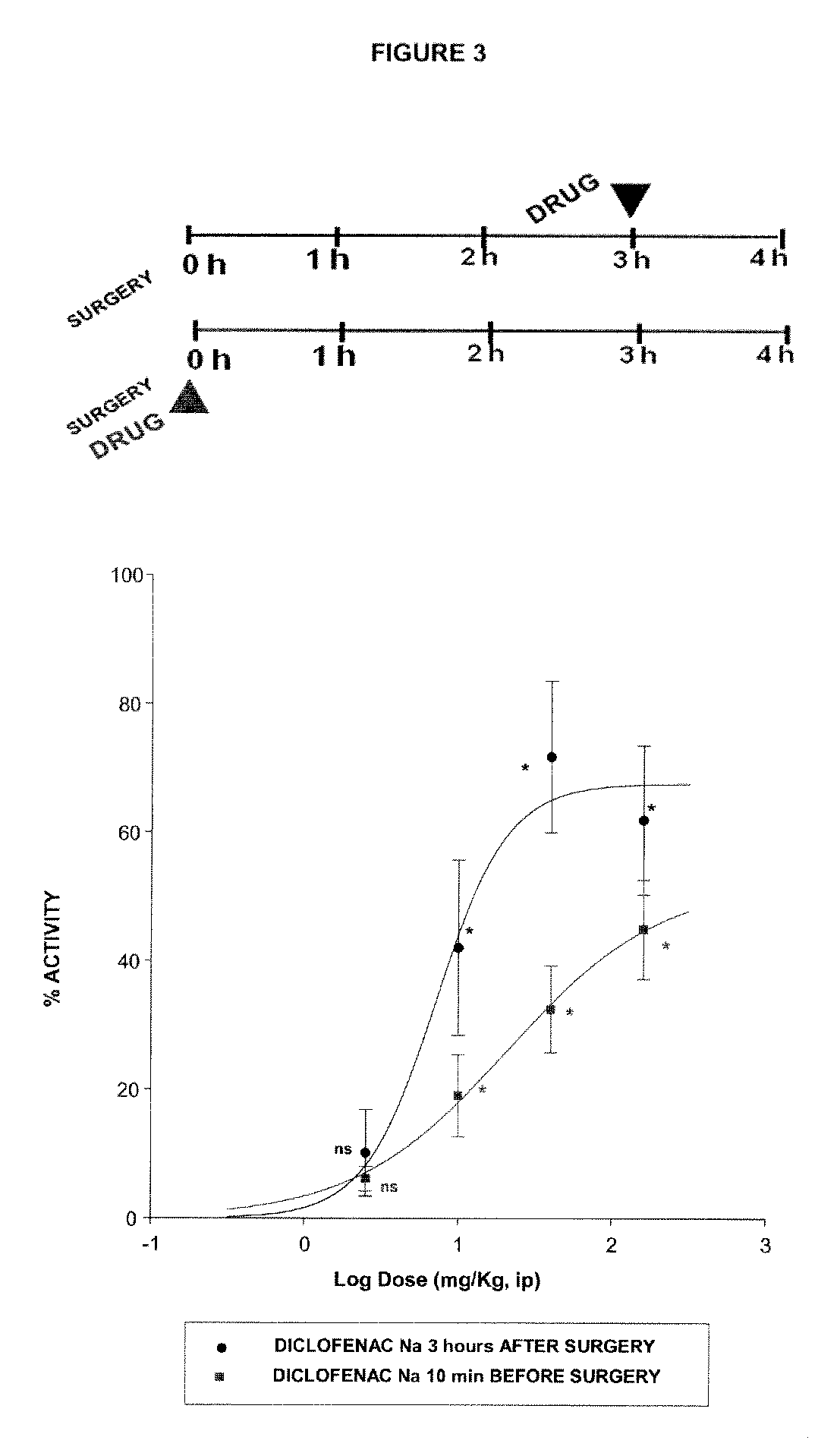Sigma ligands for use in the prevention and/or treatment of post-operative pain
a technology of sigma receptor and ligand, which is applied in the direction of heterocyclic compound active ingredients, drug compositions, nervous disorders, etc., can solve the problems of prolonging hospitalization, exposing certain vulnerable patient groups to the risk of serious complications, and achieving the effect of high-efficiency in preventing or treating the pain associated
- Summary
- Abstract
- Description
- Claims
- Application Information
AI Technical Summary
Benefits of technology
Problems solved by technology
Method used
Image
Examples
example 1
Synthesis of 4-{2-[5-Methyl-1-(naphthalen-2-yl)-1H-pyrazol-3-yloxy]ethyl}morpholine (Compound 63) and its Hydrochloride Salt
[0387]
[0388]Compound 63 can be can be prepared as disclosed in the previous application WO2006 / 021462. Its hydrochloride can be obtained according the following procedure:
[0389]Compound 63 (6.39 g) was dissolved in ethanol saturated with HCl, the mixture was stirred then for some minutes and evaporated to dryness. The residue was crystallized from isopropanol. The mother liquors from the first crystallization afforded a second crystallization by concentrating. Both crystallizations taken together yielded 5.24 g (63%) of the corresponding hydrochloride salt (m.p.=197-199° C.)
[0390]1H-NMR (DMSO-d5) δ ppm: 10.85 (bs, 1H), 7.95 (m, 4H), 7.7 (dd, J=2.2, 8.8 Hz, 1H), 7.55 (m, 2H), 5.9 (s, 1H), 4.55 (m, 2H), 3.95 (m, 2H), 3.75 (m, 2H), 3.55-3.4 (m, 4H), 3.2 (m, 2H), 2.35 (s, 3H).
[0391]HPLC purity: 99.8%
example 2
Assessment of Analgesic Activity Against Post-Operative Pain in Rats
[0392]The induction of anaesthesia in rats was performed with 3% isofluran for veterinary use, employing an Ohmeda vaporizer and an anaesthesia chamber. Anaesthesia was kept during the surgical operation by a tube which directs the isofluran vapours to the animal's snout. Once the rats were anaesthetised, they were laid down in a prone position and their right hindpaws were cleaned out with alcohol.
[0393]Then, a skin incision in the hindpaw of about 10 mm was made by means of a scalpel, starting about 5 mm from the heel and extending toward the toes. Fascia was located and by means of curve scissors muscle was elevated and a longitudal incision of about 5 mm was made, thus the muscle origin and insertion remained intact. Therefore, both superficial (skin) and deep (muscle) tissues and nerves were injured. The skin of the paw was stitched with a suturing stitch with breaded silk (3.0) and the wound was cleaned out wi...
PUM
| Property | Measurement | Unit |
|---|---|---|
| time | aaaaa | aaaaa |
| pain threshold | aaaaa | aaaaa |
| physical trauma | aaaaa | aaaaa |
Abstract
Description
Claims
Application Information
 Login to View More
Login to View More - R&D
- Intellectual Property
- Life Sciences
- Materials
- Tech Scout
- Unparalleled Data Quality
- Higher Quality Content
- 60% Fewer Hallucinations
Browse by: Latest US Patents, China's latest patents, Technical Efficacy Thesaurus, Application Domain, Technology Topic, Popular Technical Reports.
© 2025 PatSnap. All rights reserved.Legal|Privacy policy|Modern Slavery Act Transparency Statement|Sitemap|About US| Contact US: help@patsnap.com



